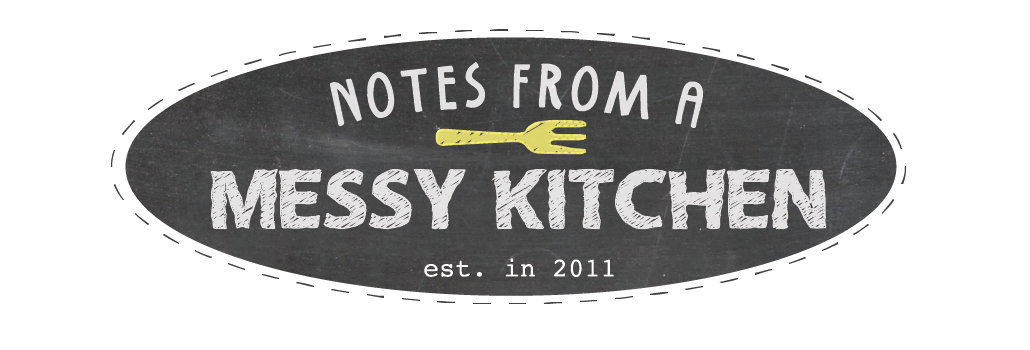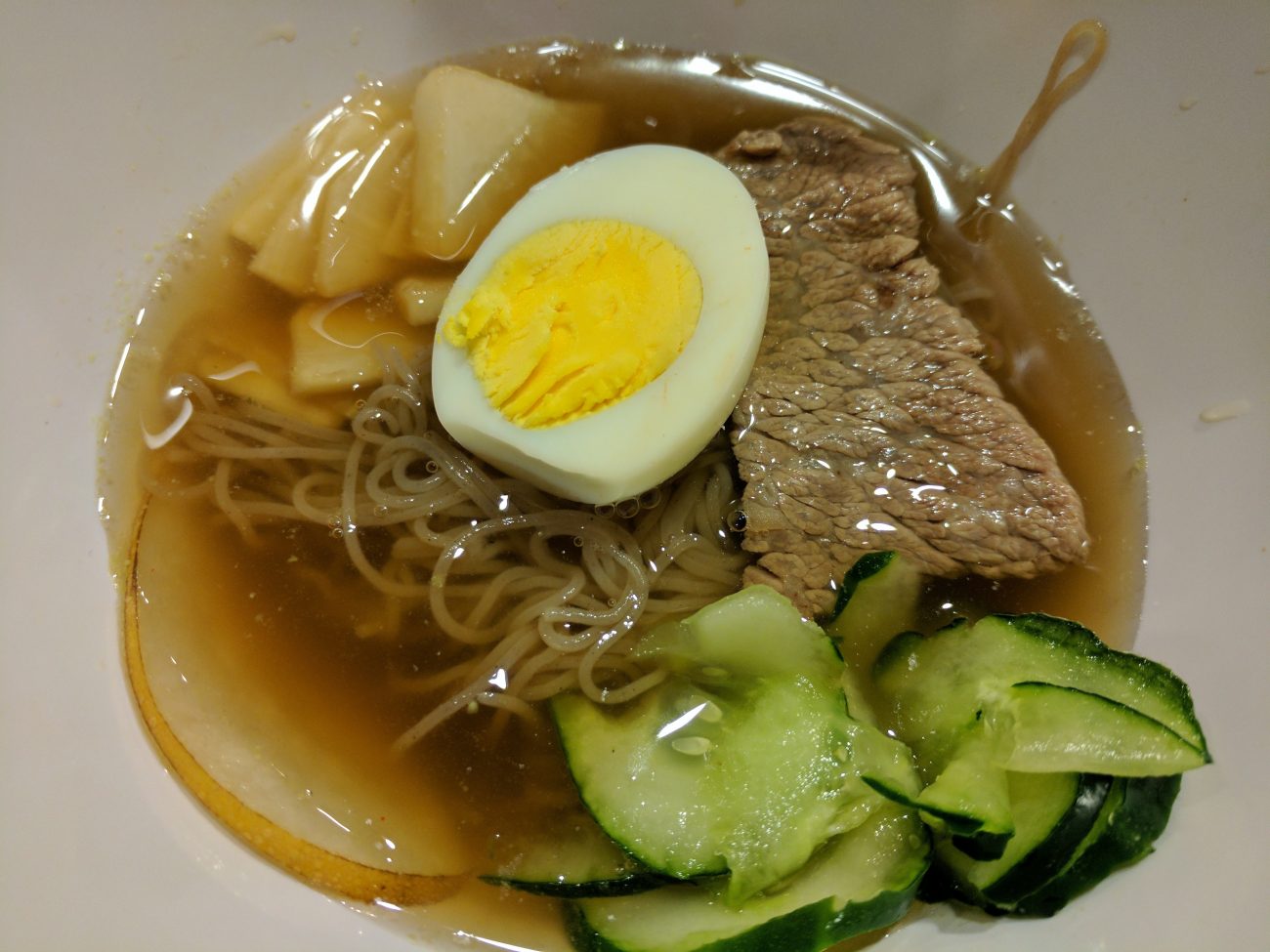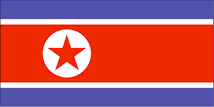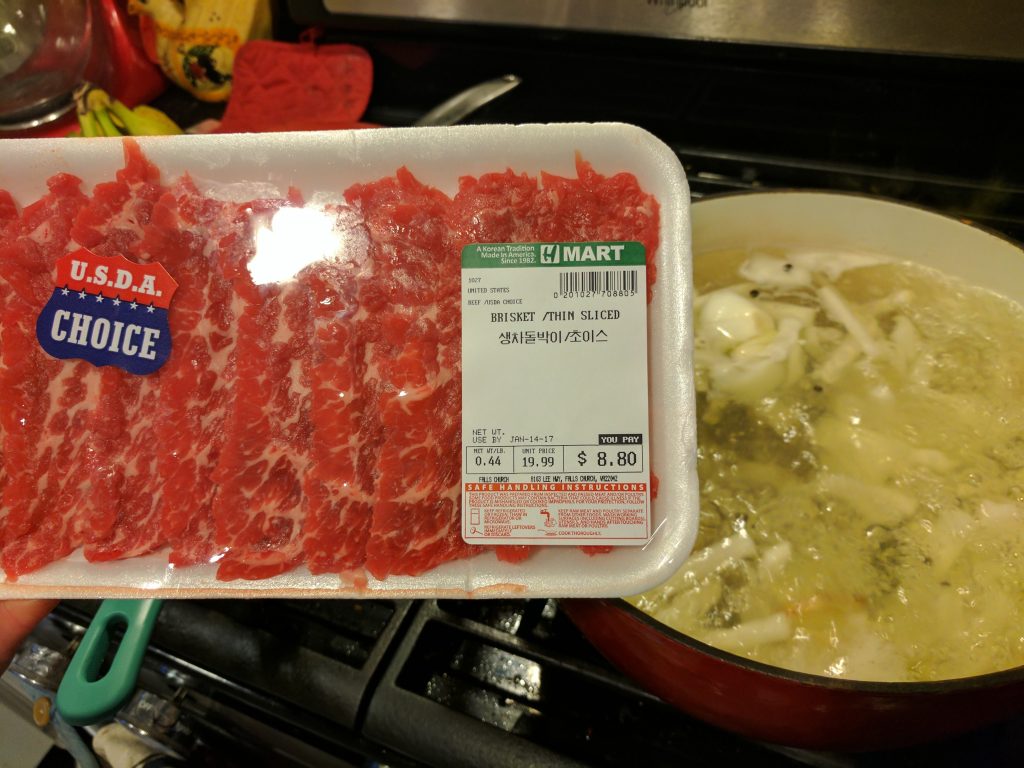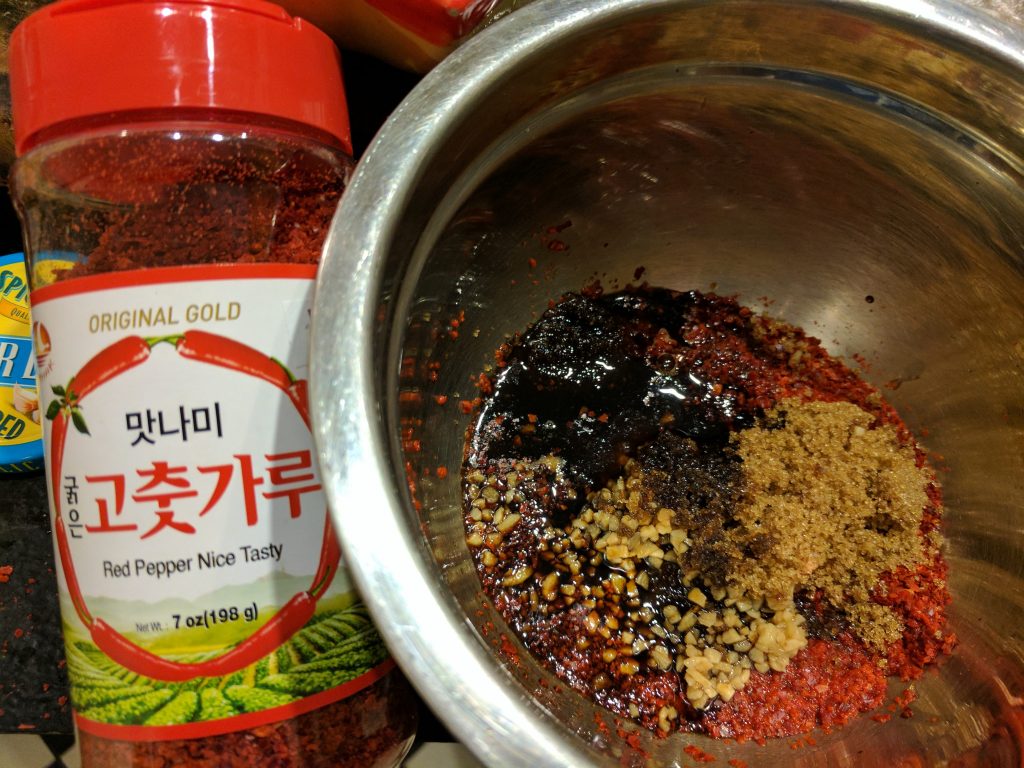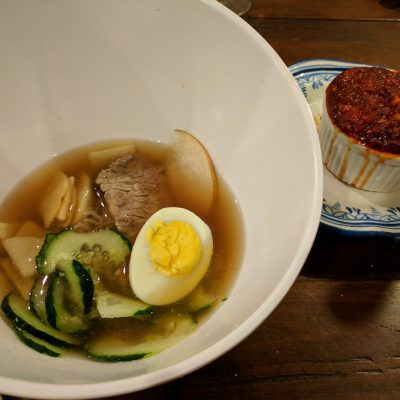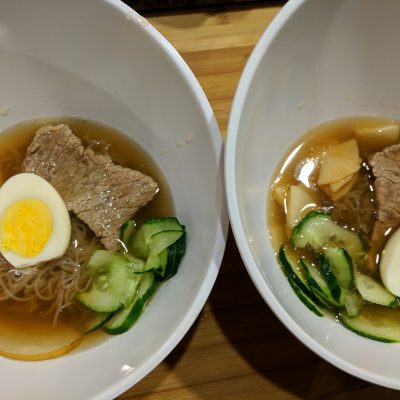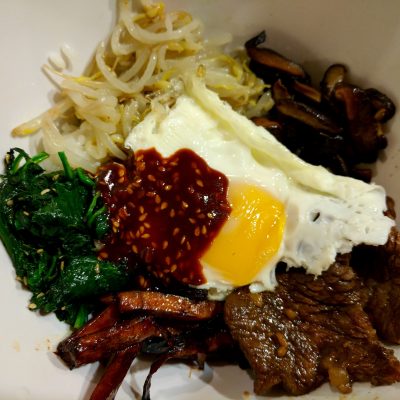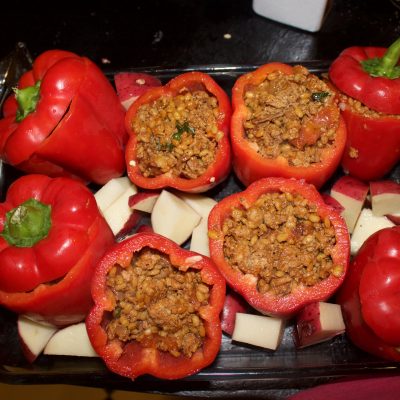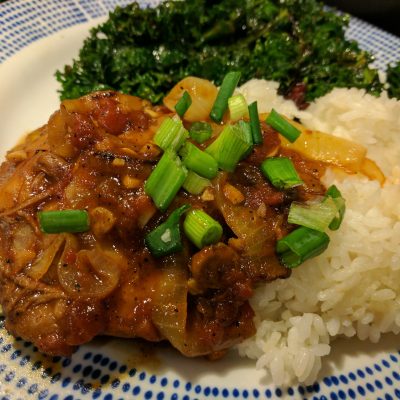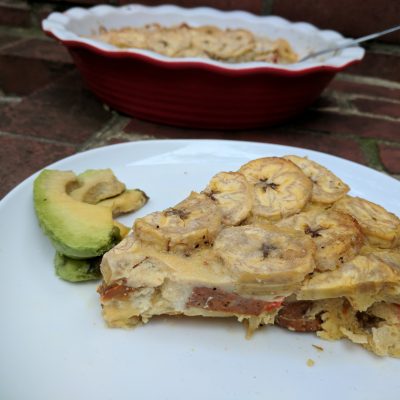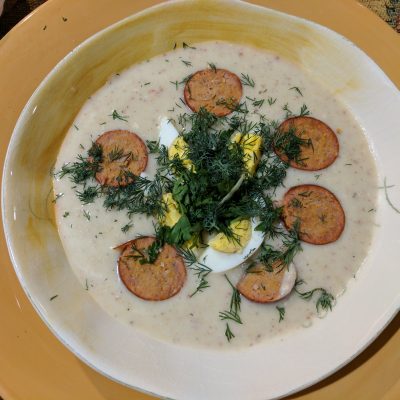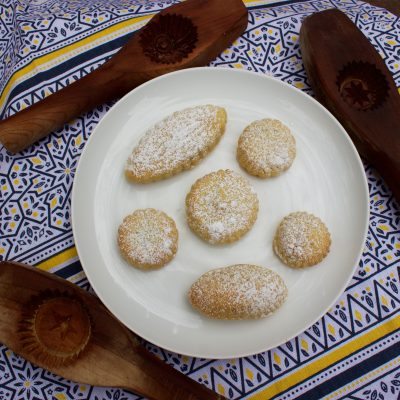Ingredients
-
Beef Broth
-
1/2 pound beef brisketraw, thinly sliced
-
1/2 onionchopped
-
6 cloves garlic
-
1" piece gingerthinly sliced
-
3 scallionwhite part only
-
2 Tbsp soy sauce
-
1 tsp brown sugar
-
1 tps peppercorns
-
2 cubes beef bouillonoptional
-
Bibim Naengmyeon sauce
-
4 Tbsp ground gochugaru
-
1/4 cup beef broth
-
3 Tbsp Korean peargrated
-
3 Tbsp brown sugar
-
2 tsp garlicminced
-
1 Tbsp soy sauce
-
1 tsp Kosher Salt
-
Sweet & Sour Radish
-
12 oz Korean radish
-
3 Tbsp rice vinegar
-
2 Tbsp brown sugar
-
1 tsp Kosher Salt
-
Naengmyeon
-
10 oz naengmyeon noodlesdried
-
2-3 Large eggsboiled, shelled and halved
-
1/2 cucumberthinly sliced
-
1/2 Korean pearthinly sliced
Directions
We’re starting our culinary journey in North Korea, where I’d venture to guess you haven’t eaten a meal. Since foreign visitation is strictly limited, so is our insight on their cuisine. Technically speaking, I actually have been to North Korea, but we stayed within the strict limits of the DMZ and we didn’t stop for lunch – although we did buy shot glasses and key chains.
Doing a little bit of research, I kept being brought back to naengmyeon, a cold noodle dish of thin, chewy noodles made with buckwheat and potato starch. Naengmyeon was originally a North Korean delicacy, but was brought to South Korea by those fleeing the north during the Korean war and is now widely eaten across both North and South Korea. There are two types of naengmyeon: mul naengmyeon and bibim naengmyeon. In mul naengmyeon – commonly known as Pyeongyang naengmyeon after North Korea’s capital city in which it originated – the noodles are served in a clear beef broth – sometimes combined with dongchimi (radish broth) – and chilled until almost slushy; bibim naengmyeon is served without broth, and the noodles are mixed with a spicy chili sauce. I remember eating both varieties during my visit to South Korea.
I decided to make the mul naengmyeon, although I also made the bibim sauce to garnish it along with pickled radish, Korean pear, cucumber and an egg – traditionally naengmyeon toppings. A cold soup might sound like a strange choice in the winter – especially with the current cold spell we’re having here in D.C. – but I read that it is commonly eaten during winters in Korea, and I have to say I really enjoyed this dish a lot!
Recipe source: Korean Bapsang (blog)
Steps
|
1
Done
1 hour (plus 2+ hours to chill)
|
Beef BrothIn a large pot, bring onion, scallions, garlic, ginger and peppercorns to a boil in 14 cups of water. Reduce the heat to medium and skim off the scum. Add the beef. Continue to boil, covered. *Remove the beef about ~10 minute and set aside; allow the broth to continue to boil approximately 1 hour. Stir in beef bouillion, if using, soy sauce and sugar with 10 minutes remaining. Remove the meat and cool. Strain the broth and put in the freezer to cool for several hours. The broth is traditionally served so chilled it's slushy, but I just served mine very cold. *I used thin sliced beef and did not want it to become overly tough so I removed it and set aside. The broth was not "beefy" enough, so I added the bouillion |
|
2
Done
5 minutes
|
Bibim Naengmyeon sauce |
|
3
Done
5-10 minutes
|
Sweet & Sour RadishPeel and thinly slice the radish into thin strips by hand or using a mandoline. Put in a small bowl with vinegar, sugar and salt and mix by hand until dissolved. Refrigerate until ready to use. |
|
4
Done
5 minutes
|
CucumberRub the thinly sliced cucumber in a bit of salt and refrigerate until ready to use. |
|
5
Done
5 minutes
|
NoodlesCook noodles according to package. They should only take a couple minutes to cook. While the water is boiling, prepare an ice bath. Strain the noodles and dunk in the ice bath right away; let sit until very cold. Strain out the icy water. |
|
6
Done
5 minutes
|
To AssemblePut one serving of noodles in the middle of each serving bowl; pour icy broth around the noodles in each bowl. Top with the pickled radish, slices of beef, cucumber, pear and a half boiled egg in each bowl. Serve with Bibim Naengmyeon sauce, if desired. Can also serve with vinegar and hot mustard paste on the side. |
